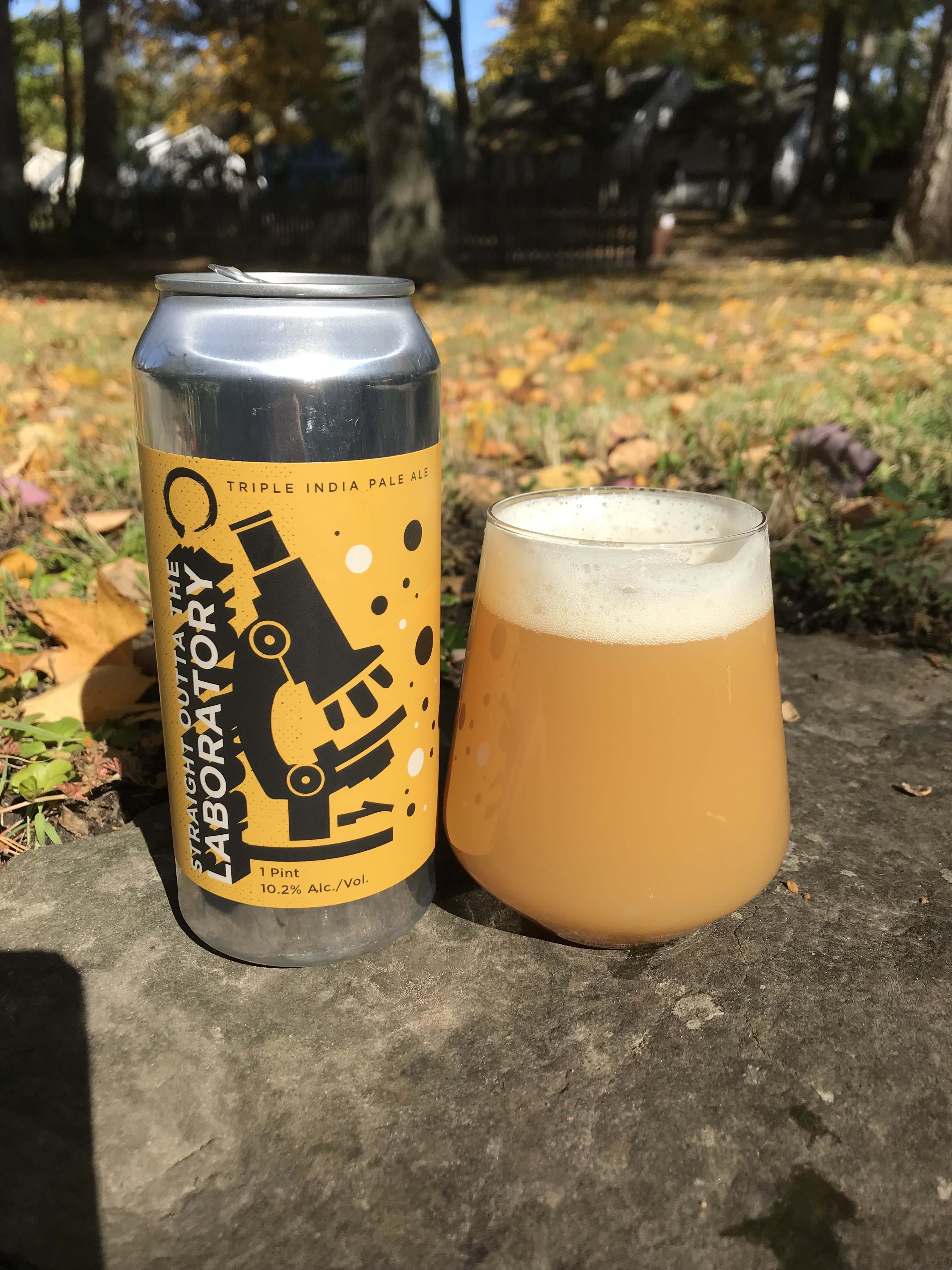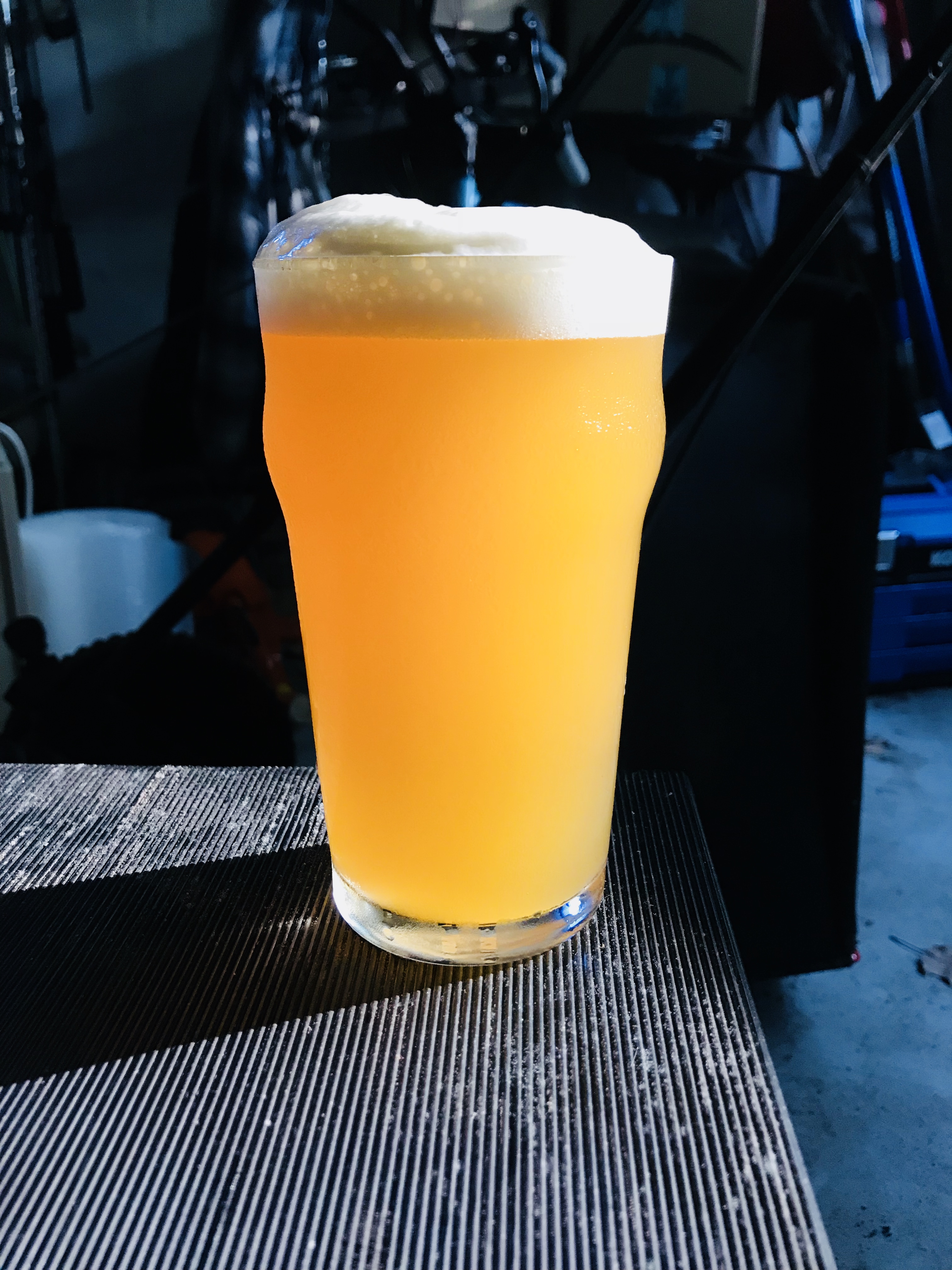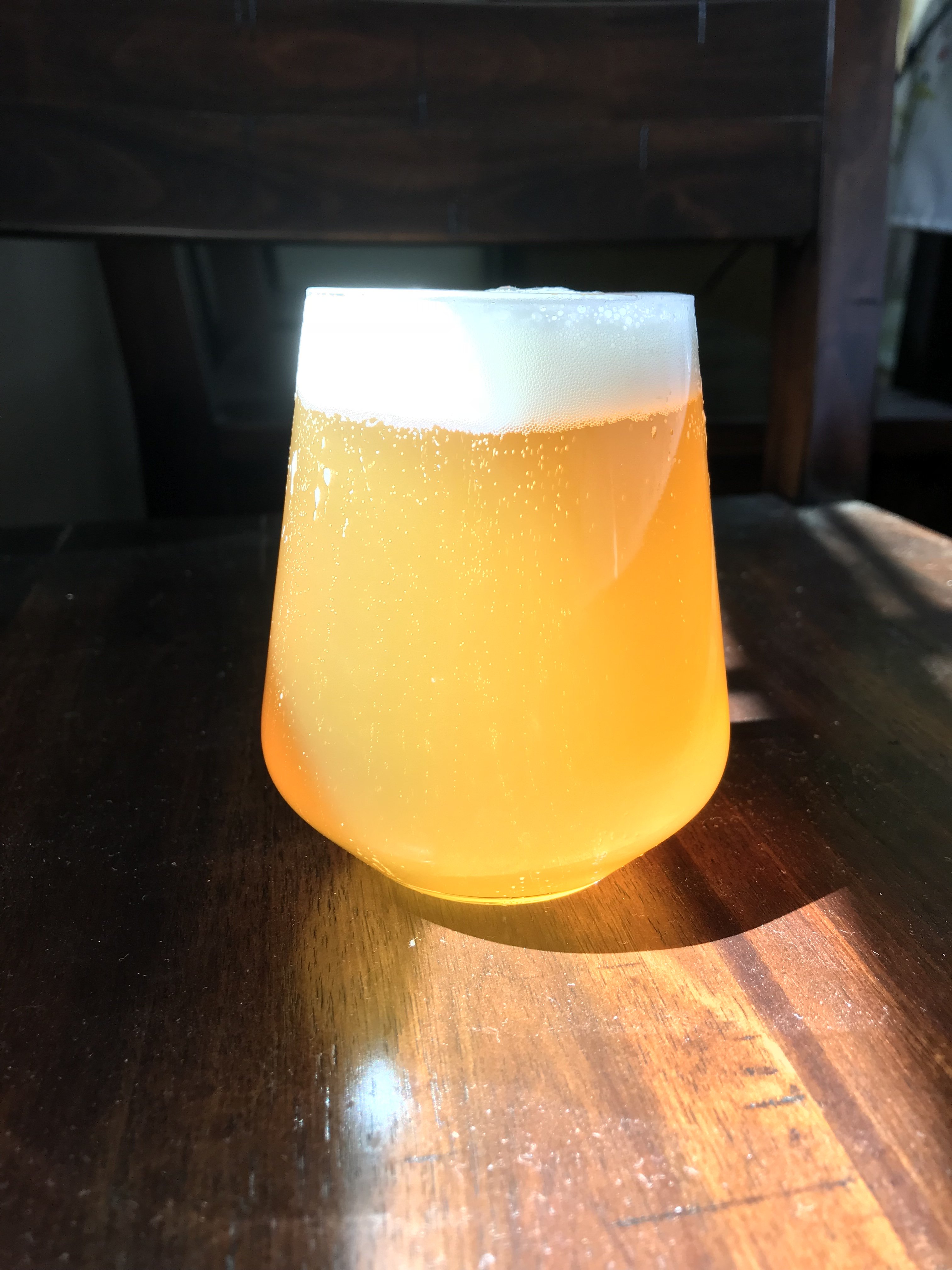After reading this thread over many days I incorporated much of this in my latest BOTTLE CONDITIONED NEIPA. We've been using a few tricks for good bottle conditioning that I'll detail below (Hint: It's purging with CO2)
Full disclosure, we fermented this in a Spike Flex+ complete with a gas manifold in a fermentation chamber, but this could easily be adapted to a carboy with carboy cap or many other cheaper fermentation vessels.
I have become a convert to couchsending's method of soft crashing before the dry-hop and only a large single dry hop. In the past, I have found hop oils would drop out with the yeast when you finally refrigerate the bottle. You can't really roll or rouse the bottle without getting a lot of sediment in your pour. With a soft crash and then another crash before bottling I got the most intense hop flavor, stable haze, and less sediment in the bottle. Any fears of missing out on biotransformation can be allayed by using a large whirlpool addition. It's not like those oils are just going to disappear.
We blow CO2 through the manifold while dryhopping through the 4" TC port on top. I bought the Flex+ specifically for this feature over other brew buckets because it allowed me to do this. In the past, we purged with CO2 while doing the same in a PET carboy. We also maintain positive pressure while cold crashing to prevent oxidation from suckback (you could use the balloon method on a carboy or low PSI from a CO2 tank)
For the past two years we've been purging the headspace in our bottles with CO2 through a hose from the regulator, but recently splurged on a Blichmann Beergun. It is way easier to use, plus allows us to pre-purge the bottle and then again on the headspace. We bottled directly from the fermenter and carbed with a Domino Dot which worked pretty well. You could also do a closed transfer to a bottling bucket if you wanted to, but it seems like an extra step where something could go wrong. I found that in the past even doing open transfers to a bottling bucket the headspace purge led to much more stable beers.
My carbonation sample after 8 days in the bottle (one day in the fridge) was insanely aromatic, juicy and smooth. Better than many commercial examples and certainly better than previous homebrewed attempts.
Moral of the story is CO2 and soft-crashing are your friends.























![Craft A Brew - Safale BE-256 Yeast - Fermentis - Belgian Ale Dry Yeast - For Belgian & Strong Ales - Ingredients for Home Brewing - Beer Making Supplies - [3 Pack]](https://m.media-amazon.com/images/I/51bcKEwQmWL._SL500_.jpg)






































